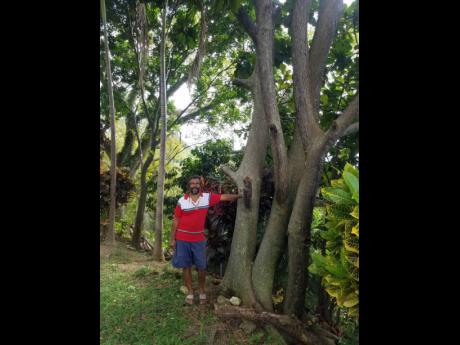Go to Abeokuta for peace and a piece of history
In 1980, Steadman Banhan bought 15 acres of property at Mount Pleasant in Dean’s Valley, Westmoreland. Two years later, the property fell under the ownership of Owen ‘Bredda Man’ Banham, one of his sons.
It was a thick “jungle”, which took several months to clear. The people around thought Banham was coming from a place of insanity, but there was a method to his madness.
When it was all cleared of trees, Banhan and his wife chanced upon the ruins of the 18th-century Dean’s Valley Water Works Estate, including the great house. It turned out that an African village named Abeokuta (Bekuta to the locals) was also located on the 2200-acre property.
It was settled by the Yoruba people of Nigeria who had come to Jamaica as indentured labourers after Emancipation. The village was named after Abeokuta in southern Nigeria because the migrant labourers said the area looked much like their city back home.
On June 12, 1979, a deluge destroyed residents in the area from which a great majority of the people fled. Many came back after the Banhans transformed the ruins of the estate into an ecotourism retreat called Abeokuta Paradise Nature Park, which was visited in the 1990s by well-known Nigeria writer, Wole Soyinka, who was born in Abeokuta, Nigeria. It was officially opened in January 2003 by none other than Florentina Adenike Ukonga, the then Nigerian high commissioner to Jamaica.
‘NATURE IN TRANQUILITY’
Situated not far from the main road from Galloway to Whithorn, it is off the beaten track; a visit there has to be intentional. After a brief bumpy ride, the ruins of the waterworks and ice factory and a small waterfall should come into view. The area is also called Water Works. The park is a few minutes from the waterfall.
The well-manicured grounds are actually a garden of ginger lilies, ferns, taro plants, croton, palms, etc. “Nature in tranquillity” is what you get, according to Bredda Man. It is a tranquil space all right, where there are the functional remnants of an aqueduct system and a pool into which the water from the Sweet River that runs through the aqueduct collects before cascading over some rocks.
The source of the river is less than 20 minutes away. At this point, it is said, the migrant labourers could see a huge rock that reminded them of another called Olumo Rock in their homeland. It is actually a mountain that was used as a natural fortress during 19th-century intertribal wars. From the source, the crystal-clear liquid flows to a small pool before reaching a much larger one.
The sound of the water rushing into the bigger pool is soothing and relaxing, and its stillness has a calming effect. To swing over it, there is a long rope from which you can dive into the cool 10-foot depth in the middle. The shallowest section is four feet deep.
Not far from the ruins of the great house, the place where the Africans were buried is located in a basin. There is a panoramic view of the Westmoreland plains and the Negril hills in the far distance from the gazebo. It is said that Negril, 26 miles away, can be seen on a clear day.
Two pieces of marble headstones are embedded in the ground near the main gate. One piece has a family crest etched into it, while the inscription on the other is barely visible. However, “John Maximillan” can be discerned.
Many people owned the estate, and Internet search revealed that in 1832 the Dean’s Valley Water Works Estate was in the possession of William Miller and George Marrett, lawyers to John Vaughan and Philip Vaughan, who had 179 enslaved people, while the Dean’s Valley Dry Works was registered to a John Tharp, who had 140 enslaved people.
The Abeokuta Paradise Nature Park is a laid-back place where visitors can camp out and enjoy the clean and fresh night breeze from the hills in the north. It is a gem of nature shrouded in history, heritage, and tranquillity.



